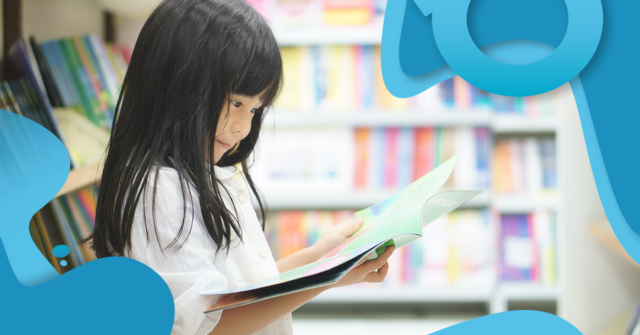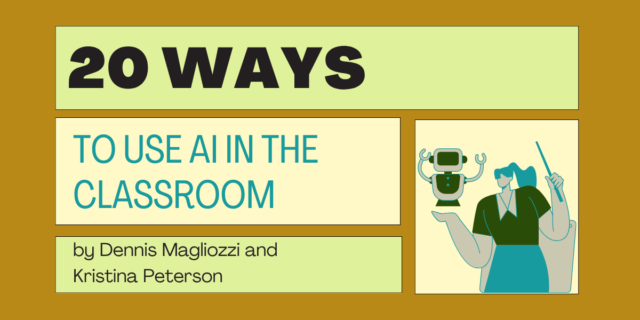Routines are the backbone of a well-run classroom. They give kids just enough structure to count on and grow from. Authors Judy Dodge and Andrea Honigsfeld’s new instructional guidebook, Core Instructional Routines, offers ideas that give every student practice with reading, writing, speaking, and listening - and opens up numerous opportunities for differentiated instruction. In today’s blog, Dodge and Honigsfeld answer the question, why literacy routines?
Routines are the backbone of a well-run classroom. They give kids just enough structure to count on and grow from. Authors Judy Dodge and Andrea Honigsfeld’s new instructional guidebook, Core Instructional Routines, offers ideas that give every student practice with reading, writing, speaking, and listening - and opens up numerous opportunities for differentiated instruction. In today’s blog, Dodge and Honigsfeld answer the question, why literacy routines?
Why Literacy Routines?
Written by Andrea Honigsfeld and Judy Dodge
The education landscape is changing rapidly. New standards, new curricula, new assessments, new policy, new technology, whose head is not spinning? Teachers we work with seem overwhelmed by the never-seizing waves of reform efforts.
Amidst all the changes, all the new initiatives, shifts in educational practices and priorities, routines serve a unique purpose: They ground teachers. They offer stable foundations on which you can more confidently build new constructions. In our latest book, Core Instructional Routines, we share ideas for establishing routines in the four literacy domains (reading, writing, listening and speaking) as well for developing background knowledge and academic language.
We call routines the deliberate procedures that teachers establish in their classroom to develop community and offer structure to their learners. Routines are individual and shared habits within a classroom community. Students come to know that this is the way we do things around here. Your students can count on certain structures to take place regularly and can expect them to be part of business as usual here. So what are some daily routines that will help your students’ literacy development?
To support reading instruction, try the Socratic Circle routine: students listen and speak to each other in a more formal, academic way in order to make sense of the reading. The first thing you do when using this routine is to have your students create a large circle with chairs (and/or desks) around the room. Ask each student to make a name card on a tented index card or piece of folded construction paper. The name cards will add to the formality of the routine, evoking a sense of responsibility to respond to one’s peers, rather than just to the teacher. Your students should be encouraged to direct their comments to one another, always using the name of the person to whom they are speaking. For example, one student might say, “I understand what Jason is saying, and I would like to add __________ because on page 3 the author says that _________.” Display anchor charts with precise academic language and sentence frames for discussion so that students can refer to them when participating in this reading routine.
Following the Socratic Circle, have your students write a brief summary or complete an “I learned…” statement. This way they can also write to reflect on what they have learned through the Socratic Seminar routine.
To ensure meaningful daily writing tasks, have your students keep a log, or journal. On routine we suggest is the Personal Opinion Log, which is a regular marble notebook (decorated and personalized) and specifically designated for stating opinions. Other options include: using loose-leaf pages, index cards on a book ring, or electronic media, such as the Notebook app on the i-Pad, or Notes on a computer. Have your students can keep track of their opinions on a variety of content-based, literacy-related, and authentic, real-world topics. What will your students gain from keeping an Opinion Log?
• Learn to state preferences
• Formulate opinions using suggested sentence frames or words/phrases
• Develop ownership of opinions by putting them in writing
• Make choices and justify them
• Make connections to content area learning
• Express their opinions in a more structured format
• Reflect on and reevaluate opinions held previously (since they remain available in the log)
• Notice how opinions change over time
There are many more routines to choose from: students may learn that upon entering this classroom, they will regularly complete an “Entrance Card” or write in their Academic Journal to summarize yesterday’s lesson or last night’s homework. They understand that if an interesting question comes up in this classroom during discussion, they can post their question on a bulletin board or the Question Kiosk; they learn to count on getting the time for independent research and they look forward to the opportunities to discover the answer to their own questions or to further explore the question.
They also discover that in your class working and talking with a partner is a regular part of each lesson. The expectations are clear for Rotation Stations or choices that they will have on their Choice Boards. The routines in your class do not only keep your class running smoothly and organized fashion while supporting literacy development, they will also be internalized by your students.
Routines as we define them are far from dull, repetitive, unimaginative, scripted ways of teaching. We believe that routines will not only lay the framework for predictable structures, instructional consistency, and skill-building, but will also provide plenty of opportunity for teacher autonomy, creative expression, and nurturing the desire to learn in each child.
Click here for a sample chapter of Core Instructional Routines and to learn more about the book.


